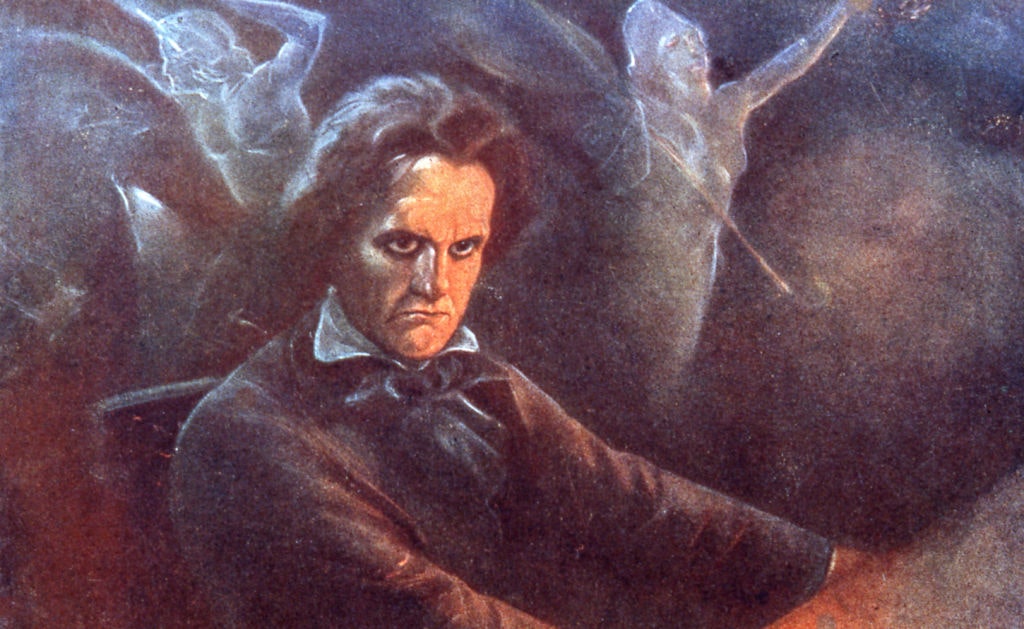Irrational rashers
Vegan bacon is a real horror
This article is taken from the May 2023 issue of The Critic. To get the full magazine why not subscribe? Right now we’re offering five issues for just £10.
Every time I return, I understand less. Soon, England will become unrecognisable to me or, at least, to a revenant from the days of my childhood in London who will wonder what became of good manners, stiff upper lips, hats, pipes and the scents of boiled cabbage and lamb fat.
On my current visit, a trivial yet disturbing sight swept past, as I climbed the escalator in a tube station. “Vegan bacon,” announced the poster, “never looked like this.”

The paradox of vegan bacon is intelligible: readers of this column already know that I don’t expect vegans to be rational. What unnerved me was the accompanying picture, in which rigid slivers, slicked with grease and striped with clashing shades of sickly jonquil and muddy carmine, aligned in a pan, as parallel as pens in a bookie’s top pocket.
The overall effect was as if a madman had decided to slice and fry the trouser-legs of shiny nylon pyjamas. Evidently, however, this revolting image was designed to sell something.
The notion that nowadays streakiness evokes bacon in English minds depressed me. In the U.S. bacon is always mere belly-meat, in which strips of red and white alternate like the stripes on the star-spangled banner. The best British bacon, typically and historically, has been mightily meaty, from the hog’s back, with the fatty bit dangling from a big, satisfying roundel of solid flesh.
Much as I love the U.S., where I live and work, Americanisation all too often means degradation. Have the British succumbed to streaky bacon in the same abject spirit as eroded their traditions of dress, speech, pop music, university education and policing?
An even more alarming implication of the vegan bacon ad struck me: that there is demand for deception and disguise. Why should someone who wants a vegetable wish to disguise it as flesh, or a carnivore crave a starch that masquerades as meat? Except, perhaps, in the deluded world of transgenderism, normality demands truth to nature: only in fairy tales do we accept princely frogs and vulpine grandmothers. We fear wolves in sheep’s clothing and jib if the matinée idol plays the villain. The detective may wear a disguise because that is true to his nature; the criminal imposter compounds his felony.Cosmetic surgery mocks beauty and misrepresents ugliness.
Why should someone who wants a vegetable wish to disguise it as flesh, or a carnivore crave a starch that masquerades as meat?
Swift’s “fair nymph”, stripped of her falsies, was a ravaged harridan. Except at table, we think motley and maquillage are made to conceal the unsightly or sinister. Why should we want food enhanced by a kind of trickery that, in other contexts, arouses distrust?
I expect the vegan bacon ad will be a commercial failure, simply because it is rankly unappetising. Its designers, however, probably do not know how much fake food has succeeded in the past. All food preparation is transmutative, much of it almost magically so — transforming inedible grains into bread, for instance, or milk into butter, or eggs into soufflés or meringues.
We speak of dressing salad or coating fritters. We brown what is white. We blanche and stain. Not every pie contains singing birds, but every crust is concealment, tempting the eater to expose what lies beneath. Surprise lurks under every sauce.
Food as disguise has been a theme of almost every culture of social differentiation, as a means of escape from excess. If you look far enough back into the past you find overeating as a means of elite self-distancing from undernourished masses.
For Charlemagne, or for Loki and Lodi — heroes of the Edda who competed for kingship in an eating contest — gut-busting levels of ingestion were royal graces. The poor fed from the crumbs of the rich man ́s table. Even today, in parts of West Africa, chiefly fare excels that of commoners only in its stupefying quantity: the ingredients and recipes are unchanged at various levels of rank.
Food as disguise has been a theme of almost every culture of social differentiation, as a means of escape from excess
Usually, however, courtly cuisines have turned to elaborate strategies of preparation to elevate their confections above the pabulum of the people. Hence came food as spectacle or table-top theatre, in which, for example, at the wedding-breakfast of a Duke of Mantua in 1581, venison pasties, moulded in the form of lions and falcons, paraded alongside pheasants dressed as peacocks, while turkeys, stuffed and erected to seem alive, accompanied marzipan statues of unicorns and Greek gods.
Forms of child’s play that echo aristocratic exhibitionism at table have produced gingerbread men, sugar mice, and chocolates moulded into simulacra of everything from eggs to elephants. Vegan bacon, perhaps, is only the last, sad distortion of a once-civilised culinary tradition.
Enjoying The Critic online? It's even better in print
Try five issues of Britain’s most civilised magazine for £10
Subscribe














